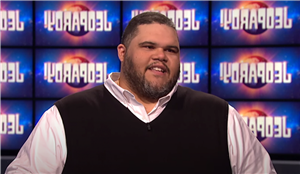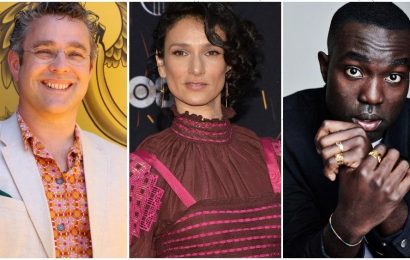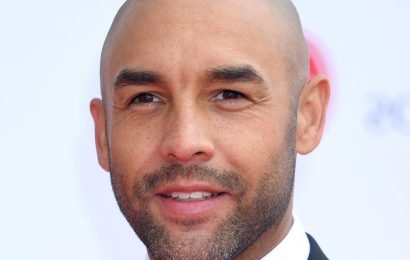It was only after a year of filming Nadeem and Saud — two brothers who had dedicated their lives to rescuing the black kite birds of New Delhi — that director Shaunak Sen started to get a clearer picture of the film he was making.
Sen hadn’t set out to make an environmental film, although the pollution and subsequent destruction of the Indian city’s ecosystem was at the heart of why the black kites were falling from the toxic skies. He’d also never even contemplated making a political film, yet mounting protests and unrest in New Delhi were becoming the undeniable backdrop of the story he was filming. Sen knew leaning into the political and environmental issues would be a trap. “The truth is I’ve always actually found a lot of environmental discourse genuinely unappealing because a lot of it is either gloom and doom, or it’s a kind of bleeding heart sentimentality,” Sen told IndieWire. “Both of which actually I think do more disservice than good.”
Further complicating matters was Sen’s increasing fear his film would look like (and be confused for) a nature documentary. In one way or another, all things he did not want to make the focus of his film were engrained into the frame of what he was shooting. To reconcile this, he turned to the subjects of his film to find answers.
“The brothers have a kind of meditative, contemplative quality in the way they talk about non-human life. They’re sort of philosophers of the urban,” said Sen. “What I learned from the brothers is that it’s not just about human, non-human entanglement, it’s that our worlds are entangled in more profound ways. The ecological is the political is the emotional. Those are not things that are partitioned at all.”
Those connections and philosophies were not something expressed in words — especially by the brothers, who actively avoided engaging in specific political and environmental issues while doing their lives’ work — but rather the camera. “There’s certain things that only the camera can show, and that’s actually the simultaneity of life,” said Sen. “No spoken word, no written word can actually explain it, only the camera can.” Learning to see the film this way, meant starting over. “Inevitably the first hundred hours of footage that you’re shooting in the first year, not a single shot of it was used,” said Sen. “And of course that makes my heartbreak but it’s actually very useful because it’s where you are finding the building blocks of your grammar.”
Watch Shaunak Sen discuss the inspiration for making “All That Breathes” in the video essay below.
Sen brought on German cinematographer Ben Bernhard, whose work with director Viktor Kossakovsky in filming the ocean (“Aquarela”) and animals (“Gunda”) had created a new language for those experimental documentaries. Together, Bernard and Sen created a set of three principles that would become the visual language of “All That Breathes.”
“The first thing was that we are not going to cut in the middle of the shot,” he said. “We are gonna do long takes of animals, and the main thing is it’s gonna have two elements: the city in the background, and then you discover the animal doing something vis-a-vis the city.” Despite the focus of the story being the brothers and the black kites, Sen and Bernhard would expand their filming to include other animals. “If you spend three minutes just watching a snail with people dancing around, a fire behind it, no spoken word. No written word can actually explain it. Only the camera can,” said Sen. “That’s actually the simultaneity of life.”
The film needed to match the meditative quality of the brothers, therefore the restlessless of any handheld camera, typical of nonfiction filmmaking, needed to be eliminated. “We put two tripods on a slider,” explained Sen. “And even when we were shooting the brothers, we would keep sliding it left to right, left to right, constantly, irrespective of their movement.”
One of the biggest components of the film’s language would be discovered in the editing room with Charlotte Munch Bergtsen, a dancer turned editor, who has been behind some of the most visually inventive documentaries of recent memory (“The Act of Killing,” “The Truffle Hunters”), and was cutting while “All That Breathes” was being shot. What Sen and Bergtsen realized is the footage often split up into two types: the brothers’ cramped, basement-like, windowless workshop and dwellings, and the open air, rooftops-and-skies world of the birds. Bergtsen wanted to lean into this, which in turn effected how the film was shot — alternating from extreme close-ups of the brothers inside, and wide vistas when up on the roof. “We realized that the main structuring principle of the film is actually that we are vacillating between extreme compression and extreme decompression,” said Sen. “It became a metaphor for something bigger. That sort of becomes a kind of inhaling and exhaling. It’s like breathing in the sense.”
Listen to the entire discussion below. To hear this and more conversations with your favorite TV and film creators, subscribe to the Toolkit podcast via Apple Podcasts, Pocket Casts, Spotify, or Overcast.
That sense of compressing and decompressing is not something you might intellectualize while watching “All That Breathes,” but it is something you feel. And like the film itself, it drives the viewer to think beyond the specific issues facing the black kites, or even New Delhi — it allows you to see the world through the lens of two remarkable brothers trying to find their place in the larger and rapidly changing ecosystem. The unique visual language of “All That Breathes” is one of the the most innovative of any film in 2022 because it embodies ideas and thoughts that can only be expressed in a movie.
The Filmmaker Toolkit podcast is available on Apple Podcasts, Spotify, Overcast, and Stitcher. The music used in this podcast is from the “Marina Abramovic: The Artist Is Present” score, courtesy of composer Nathan Halpern.
Source: Read Full Article







